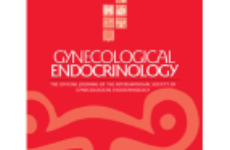
Abstract
Objective:To study the effects of long-acting gonadotropin-releasing hormone agonist (GnRH-a) on thyroid function in euthyroid patients of in vitro fertilization (IVF)/intracytoplasmic sperm injection of embryo transfer (ICSI-ET) and to investigate the timing and alteration of thyroid stimulating hormone (TSH) during controlled ovarian stimulation(COS)
Materials and Methods:
Euthyroid patients scheduled for IVF/ICSI were enrolled. Euthyroidism was defined as having no history of hypothyroidism with normal TSH before IVF. Long GnRH-a protocol was chosen as COS protocol. 207 patients were divided into two groups based on basal serum TSH level: group A with 0.35mIU/L<TSH<2.5mIU/L (n=137) and group B with 2.5mIU/L≤TSH<4.5mIU/L (n=70). Serum TSH was tested on 6 time points: before COS (2-5days in menstrual cycle,before GnRH-a injection), Gn injection day 1, Gn injection day 5, human chorionic gonadotropin (HCG) day, 14 and 28 days after transplantation. The serum TSH, clinical pregnancy and abortion rate were investigated.
Result:
The serum TSH value was significantly (P<0.05) increased after injection of long-acting GnRH-a in all patients. Both groups had significant (P<0.05) increases in serum TSH level after long-acting GnRH-a injection. The TSH level was increased in 131(63.3%) patients after GnRH-a injection, of which twenty (9.7%) had subclinical hypothyroidism with TSH level over 4.5 mIU/L.
The other 76 (36.7%) patients had decreased TSH. In group A, 79 (57.7%) patients showed an increase of TSH, including three patients (2.2%) with simultaneous rise of TPOAb and four (2.9%) diagnosed of subclinical hypothyroidism with TSH level over 4.5 mIU/L, and the rest fifty-eight (42.3%) patients had decreased TSH with one patient with elevated TPOAb who was diagnosed with subclinical hyperthyroidism.
In group B, fifty-two (74.3%) patients showed an increase of TSH, including thirteen (18.6%) patients with elevated TPOAb and sixteen (22.9%) patients diagnosed of subclinical hypothyroidism with TSH level over 4.5 mIU/L, and the rest eighteen (25.7%) patients had decreased TSH with one patient diagnosed with subclinical hyperthyroidism.
Group B had a significant higher proportion of patients with elevated serum TSH than group A (P<0.05). Compared to the baseline level, serum TSH ascended distinctly and reached peak level on HCG day in all patients. Group A and B had similar trends of alteration.
Patients in group A had significantly (P<0.05) higher clinical pregnancy rate than in group B. No significant (P>0.05) difference in abortion rate were observed between the two groups.
Conclusion:
GnRH-a can significantly increase serum TSH levels with possibledevelopment of subclinical thyroid dysfunction. Infertile patients with serum TSH>2.5mIU/L are more susceptible to GnRH-a while patients with basal TSH less than 2.5mIU/L may get a higher clinical pregnancy rate when receiving IVF/ICSI.
Yuan-Jie Du, Xin Xin, Na Cui, Lei Jiang, Ai-Min Yang, Gui-Min Hao, Bu-Lang Gao
EJOG, March 2019, Volume 234, Pages 207−212
DOI: 10.1016/j.ejogrb.2019.01.025















